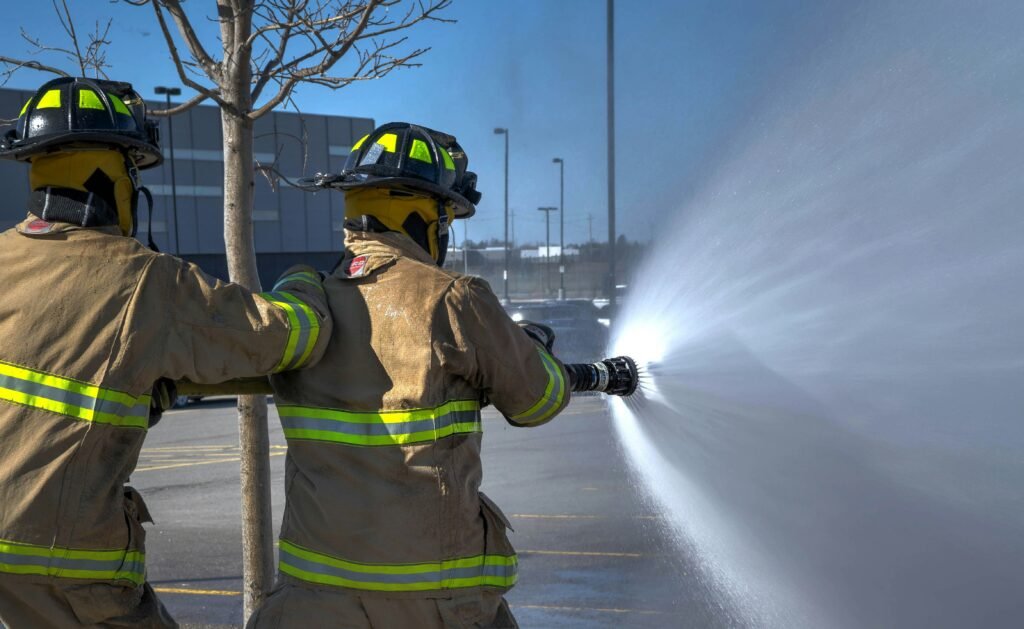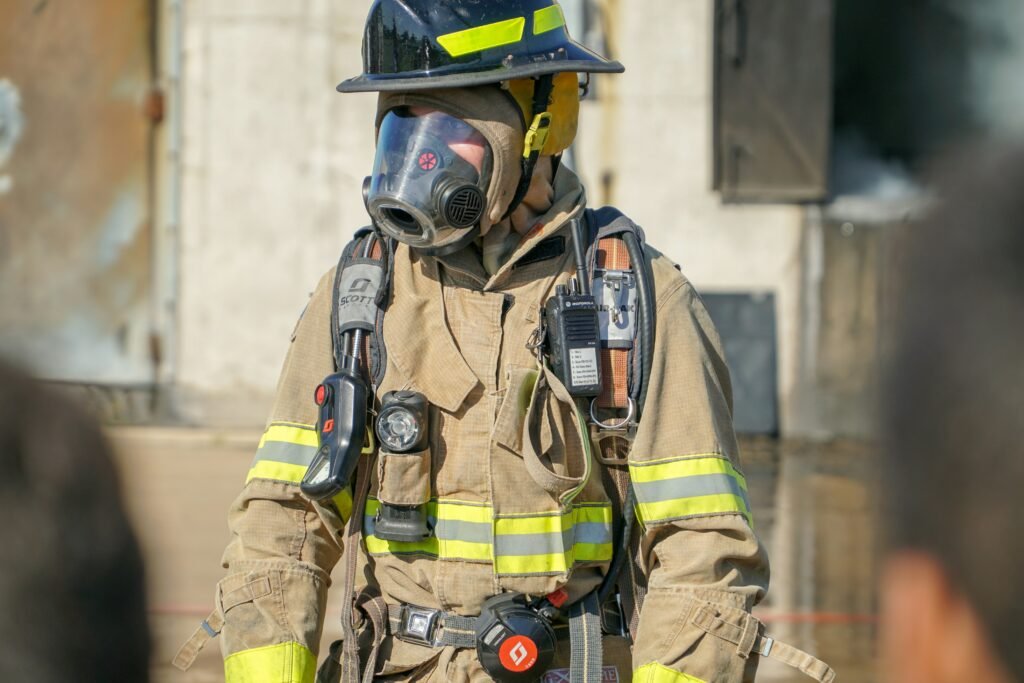Welcome to an informative article on the key equipment needed for safe installation. In order to ensure a successful and secure installation process, it is crucial to have the right tools and equipment on hand. From safety gear such as gloves and goggles to specialized tools like drills and wrenches, this article will guide you through the essential items needed for a safe and efficient installation. Stay tuned to learn more about how to equip yourself properly for any installation project. Have you ever wondered what tools and equipment are needed to ensure safe and successful installations? Whether you’re a beginner DIYer or a seasoned professional, having the right equipment is essential to get the job done efficiently and safely. In this article, we will discuss the key tools and equipment needed for safe installations. Let’s dive in and explore the world of installation equipment together!

This image is property of images.unsplash.com.
Basic Hand Tools
When it comes to installing any type of equipment or fixtures, having a set of basic hand tools is crucial. These tools are essential for tasks such as measuring, cutting, fastening, and more. Here are some basic hand tools that you should have in your arsenal:
- Screwdriver set: A set of screwdrivers with various sizes and types (flathead, Phillips head, etc.) will come in handy for a wide range of installation tasks.
- Hammer: A hammer is essential for driving nails and other fasteners into place.
- Pliers: Different types of pliers, such as needle-nose and adjustable pliers, are useful for gripping, twisting, and cutting wires.
- Tape measure: Accurate measurements are key to a successful installation, so make sure you have a reliable tape measure on hand.
- Utility knife: A utility knife is great for cutting various materials such as drywall, cardboard, and plastic.
- Level: A level is crucial for ensuring that your installation is straight and level.
- Stud finder: If you’re installing heavy items on walls, a stud finder will help you locate the studs for secure mounting.
Having these basic hand tools in your toolbox will set you up for success in a wide range of installation projects.
Power Tools
While basic hand tools are essential, power tools can help you get the job done faster and with less effort. Power tools are particularly useful for tasks that require drilling, cutting, sanding, or fastening. Here are some essential power tools for safe installation:
- Drill/driver: A versatile tool that can drill holes and drive screws, a drill/driver is a must-have for any installation project.
- Circular saw: For cutting lumber, plywood, and other materials, a circular saw is essential.
- Jigsaw: A jigsaw is great for making curved or intricate cuts in materials such as wood, metal, or plastic.
- Impact driver: An impact driver is great for driving screws and bolts with more power and speed than a standard drill.
- Oscillating multi-tool: This versatile tool can sand, cut, scrape, and grind a variety of materials, making it indispensable for many installation tasks.
With these power tools in your workshop, you’ll be well-equipped to tackle a wide range of installation projects efficiently and safely.
Safety Equipment
Safety should always be a top priority when working on installation projects. Accidents can happen, so it’s important to protect yourself with the right safety equipment. Here are some essential safety items that you should have on hand:
- Safety goggles: Protect your eyes from dust, debris, and flying particles with a pair of safety goggles.
- Ear protection: Power tools can be loud, so ear protection such as earplugs or earmuffs is essential to protect your hearing.
- Dust mask: When cutting, sanding, or drilling materials, a dust mask will help you breathe easier by filtering out harmful particles.
- Work gloves: Protect your hands from cuts, scrapes, and other injuries with a sturdy pair of work gloves.
- Hard hat: If you’re working in an area where objects could fall or overhead hazards are present, a hard hat is a must.
- Knee pads: For tasks that require kneeling or working on hard surfaces, knee pads will help protect your knees from strain and injury.
By prioritizing safety and wearing the appropriate safety equipment, you can minimize the risks associated with installation projects and work with peace of mind.

This image is property of images.unsplash.com.
Ladders and Scaffolding
When working at height, having a stable and secure platform is essential for safety. Ladders and scaffolding provide a way to reach high places and work comfortably and safely. Here are some common types of ladders and scaffolding used for installations:
- Step ladder: A step ladder is a versatile option for tasks that require quick access to moderate heights, such as changing light bulbs or painting walls.
- Extension ladder: For reaching higher areas such as roofs or ceilings, an extension ladder can be extended to various heights depending on the task.
- Multi-position ladder: This type of ladder can be configured into different positions, such as an A-frame, straight ladder, or scaffold, providing versatility for different installation tasks.
- Scaffolding: When working on large projects or for extended periods of time, scaffolding provides a stable platform for multiple workers and equipment to be used simultaneously.
Using the right type of ladder or scaffolding for the job will ensure that you can work safely and efficiently at height during installations.
Proper Ladder Safety
When using ladders or scaffolding for installations, it’s important to follow proper safety practices to prevent accidents and injuries. Here are some tips for ladder safety:
- Inspect the ladder before each use to ensure it is in good condition with no loose parts or damage.
- Use the ladder on a level surface and secure it properly to prevent slipping or tipping.
- Maintain three points of contact at all times while climbing the ladder (two hands and one foot or two feet and one hand).
- Never stand on the top rung of a ladder or overreach while working.
- Do not carry tools or materials while climbing a ladder – use a tool belt or hoist to transport items safely.
- Make sure the ladder is rated for the weight capacity of the user and any tools or materials being carried.
By following these ladder safety guidelines, you can reduce the risk of falls and injuries while working at height during installations.
Electrical Tools and Equipment
For electrical installations, working with electricity requires specialized tools and equipment to ensure safety and compliance with electrical codes. Here are some key electrical tools and equipment that you should have for electrical installations:
- Wire stripper: Used to remove insulation from wires, a wire stripper is essential for making accurate and clean electrical connections.
- Voltage tester: A voltage tester is used to check for the presence of voltage in electrical circuits before working on them, ensuring that they are de-energized.
- Multimeter: A multimeter is a versatile tool that can measure voltage, current, and resistance, allowing you to diagnose electrical issues and test circuits.
- Fish tape: When running wires through walls or conduit, a fish tape is a useful tool for pulling and guiding wires to their destination.
- Circuit tester: Used to test for the presence of voltage in outlets and switches, a circuit tester ensures that electrical connections are properly wired.
- Wire nuts and connectors: Essential for making secure and reliable electrical connections, wire nuts and connectors are used to join wires together safely.
By using the right electrical tools and equipment, you can work safely and effectively on electrical installations, whether you’re wiring a new outlet or troubleshooting an existing circuit.
Electricians’ Tool Belt
For electricians and electrical installers, having a tool belt that can hold all the necessary tools and equipment within easy reach is essential. An electricians’ tool belt typically includes pouches, pockets, and holders for organizing and carrying tools such as pliers, screwdrivers, wire strippers, and more. Some tool belts even have built-in loops for holding items such as tape measures, flashlights, or voltage testers. By keeping your tools organized and accessible in a tool belt, you can work efficiently and focus on the task at hand without having to search for tools or supplies.

This image is property of images.unsplash.com.
Plumbing Tools and Equipment
For plumbing installations, having the right tools and equipment can make the difference between a successful installation and a leaky mess. Whether you’re installing a new faucet, replacing pipes, or fixing a leak, having the right plumbing tools on hand is crucial. Here are some essential tools and equipment for plumbing installations:
- Pipe wrench: A pipe wrench is used to grip and turn pipes, fittings, and other plumbing components, making it an essential tool for many plumbing tasks.
- Adjustable wrench: An adjustable wrench is versatile and can be used for tightening or loosening nuts and bolts of various sizes in plumbing fixtures.
- Tube cutter: For cutting copper, PVC, or other types of tubing, a tube cutter provides a clean and precise cut without damaging the pipe.
- Plunger: A plunger is a simple tool that can be used to clear clogged drains and toilets by creating suction and dislodging blockages.
- Pipe threader: If you need to cut or thread pipe for a plumbing installation, a pipe threader is a specialized tool that can create threaded ends for joining pipes together.
- PEX crimping tool: For working with PEX tubing, a PEX crimping tool is used to secure PEX fittings onto tubing without the need for soldering.
Having the right plumbing tools and equipment will enable you to tackle a wide range of plumbing installations with confidence and precision.
Pipe and Fittings Materials
In addition to tools, having the right materials on hand for plumbing installations is essential. Different types of pipes and fittings are used for various plumbing applications, so it’s important to choose the right materials for the job. Here are some common types of pipes and fittings used in plumbing installations:
- Copper pipe: Copper pipe is durable, corrosion-resistant, and commonly used for water supply lines and heating systems.
- PVC pipe: PVC pipe is lightweight, cost-effective, and suitable for drain, waste, and vent (DWV) systems as well as irrigation and other applications.
- PEX tubing: PEX tubing is flexible, easy to install, and resistant to freezing, making it ideal for water supply lines and radiant heating systems.
- Brass fittings: Brass fittings are durable, corrosion-resistant, and commonly used to join copper pipes or fittings in plumbing installations.
- PVC fittings: PVC fittings are used to connect PVC pipes in DWV systems, irrigation, and other applications, providing a secure and leak-proof connection.
By selecting the appropriate pipe and fittings materials for your plumbing installations, you can ensure that your projects are durable, reliable, and leak-free.
Conclusion
In conclusion, having the right tools and equipment is essential for safe and successful installations. From basic hand tools to power tools, safety equipment, and specialized tools for electrical and plumbing installations, being well-equipped for the job will help you work efficiently and effectively. By following proper safety practices, using the right tools for the task, and selecting the appropriate materials for your installations, you can ensure that your projects are completed safely and to a high standard. So, whether you’re a DIY enthusiast or a professional installer, make sure you have the key equipment needed for safe installations in your toolbox. Happy installing!
